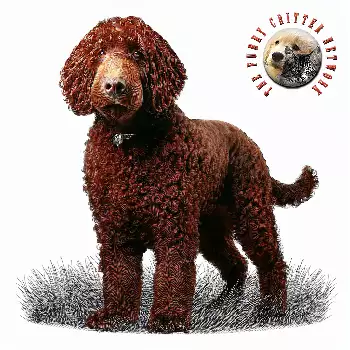The Bog Dog integrates beautifully into family life when their specific needs and characteristics are understood and accommodated. These dogs thrive in active households where they can participate in family activities and receive the attention and exercise they require. Their loyalty and affectionate nature make them excellent family companions, though potential owners should be prepared for a dog that requires significant daily interaction and activity to remain happy and well-behaved.
With children, Bog Dogs typically display remarkable patience and gentleness. Their natural protective instincts extend to the younger members of their family, and they often position themselves as guardians and playmates. However, their large size and occasionally exuberant play style means supervision is important with very young children. These dogs seem to instinctively understand the difference between rough play with adults and gentle interaction with children, adjusting their behavior accordingly.
The breed's intelligence and sensitivity make them highly attuned to family emotions and dynamics. Bog Dogs often serve as emotional barometers within the household, responding to stress, excitement, or changes in routine with corresponding behavioral adjustments. They may become more protective during times of family stress or more playful when the household mood is light and happy. This emotional intelligence makes them excellent therapy dogs within their own families.
Bog Dogs typically do well with other pets when properly socialized from a young age. Their hunting background means they may have strong prey instincts toward small animals, but early socialization can help them learn to coexist peacefully with cats and other small pets. With other dogs, they are generally sociable, though they may be somewhat selective about their canine friendships. Their size and sometimes boisterous play style may intimidate smaller dogs, so careful introductions are important.
The breed's exercise requirements significantly impact family dynamics, as owners must be committed to providing substantial daily activity. This can actually benefit active families by encouraging regular outdoor time and shared activities. Many families find that hiking, swimming, camping, and other outdoor pursuits become more enjoyable with a Bog Dog as a enthusiastic participant. However, families with sedentary lifestyles may find the breed's energy requirements overwhelming.
Training within the family context requires consistency from all members. Bog Dogs are intelligent enough to recognize when different family members have different rules or expectations, and they may attempt to take advantage of these inconsistencies. Successful families establish clear rules that everyone enforces, while also recognizing and accommodating the dog's need for mental stimulation and appropriate outlets for their energy and intelligence.
The breed's grooming requirements also affect family dynamics, as their curly coat requires regular attention to prevent matting and maintain health. This can become a bonding activity between family members and the dog, though it does require commitment and often professional grooming assistance. Families should budget for regular grooming costs and understand that this breed's coat requires more maintenance than many other sporting breeds.
Bog Dogs often thrive in homes where they have access to water for swimming, whether it's a lake, river, beach, or even a backyard pool. Families living near water often find their Bog Dog becomes an enthusiastic participant in water activities, from swimming and boating to simply playing in shallow water. This natural affinity for water can become a wonderful family activity, though safety considerations around water should always be maintained.
The breed's vocal nature means families should be prepared for a dog that will announce visitors, unusual activity, and sometimes their own excitement with their characteristic deep bark. While this makes them excellent watchdogs, it can be challenging in close quarters or apartments. Training can help manage excessive barking, but the breed's alerting instincts are deeply ingrained and serve an important function in their relationship with their family.

